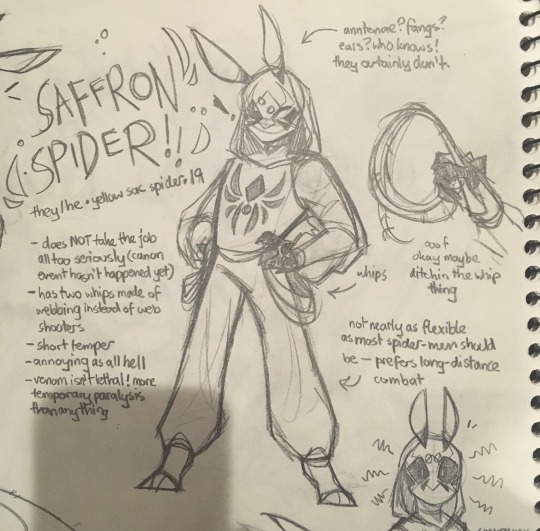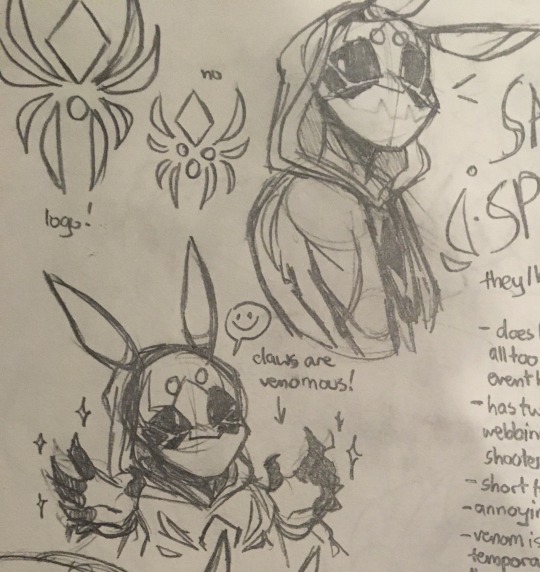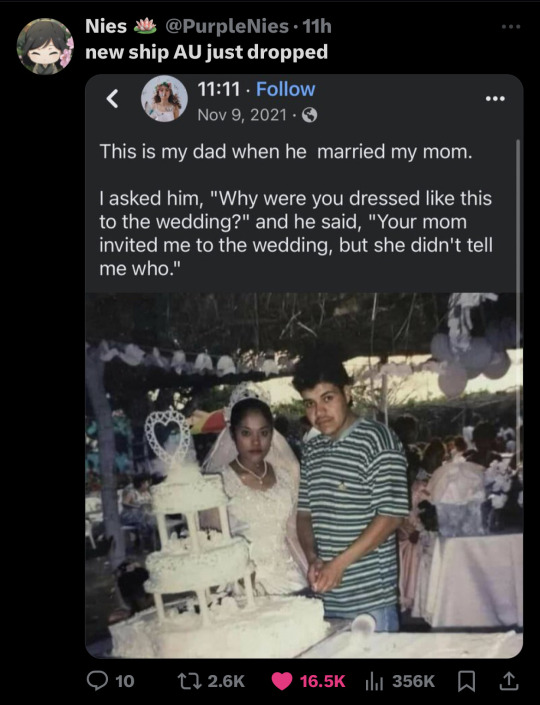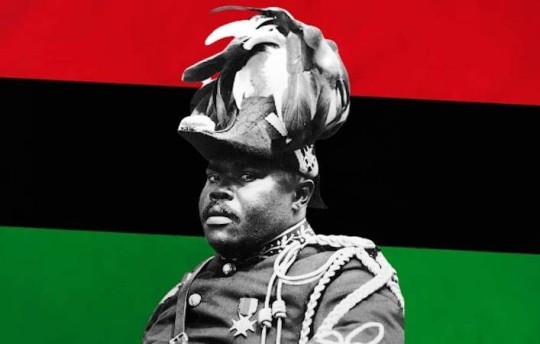#bames
Explore tagged Tumblr posts
Text
Drew these last year as apart of my corrupted Ben au. Why be evil alone? when you can be evil together?



The scars are inspired by the Morticia Adams line “I've been yours since the day you carved my initials into your thigh"
#the walking dead game#twdg#twdg ben paul#twdg james#bames#tw: scaring#corrupted au#my art#the personification of ‘I can make him better? yeah well I can make him worse’
12 notes
·
View notes
Text
hey may have flunked out of service dog school irl but not in my heart ❤️🖤❤️

1K notes
·
View notes
Text
Screams cries and throws up.. i was in a rush finishing this also ive added both my watermarks YAY

#nvuzi#nuziv#n murder drones#murder drones uzi#murder drones n#murder drones#md#uzidoorman#murder drones v#uzi murder drones#v murder drones#god i love them#polyamroy wins#i think they need a cool ship bame#idk what tk call it.#nuzi#n x uzi x v#you can actually interpret this however you want#im a sucker for them though#uzi x v x n#uzi x n x v#biscuitbites#violetviolence#envy#envy murder drones#I MISS THEM#v please be alive#sobs everywhere#asuaggh#augh
213 notes
·
View notes
Text
S2 arcane spoilers!!
Anyone else notice how dim viktors eyes look in the new season like

And it's like this for nearly every other shot
Compared to his eyes in s1

And he's rlly out of character too
And sure that could be the trauma of EVERYTHING that's happened
But I feel like it's more than that
The hexcore is controlling him obviously so maybe we'll see him try to fight against it??
I really hope he does bc I don't think the whole magic arcane Jesus thing is really working for me tbh
OR if he doesn't manage to get free of the hexcore maybe he decides to lean into it by baking himself even more robotic buy powered by hextech or whatever the new equivalent would be
I've also been thinking maybe he'll start upsetting the chem barrens?? But it seems kinda unlikely
#he needs more screen time also#theres like 5 things all happening at once and viktor has something to do with at least 2 if them#abd hes only in like 1 episode with only like 15mins of screen time#and whats going on with the singed stuff???#like ik its warwick but how tf are they going to fit all of this in to 9 episodes with the first 3 basicly being set up??????#arcane#arcane lol#arcane league of legends#viktor arcane#arcane season 2#arcane viktor#arcane theory#arcane thoughts#arcane spoilers#arcane s2 spoilers#jesus viktor#apparently#honestly i dont mind the sky and viktor stuff#like i feel like we all knew jayvik wasnt going to be cannon WITH caitvi#unfortunately series's are just Like That#especially netflix#jayvik#still really want to see the glorious evolution dont want it to be bame droped tho#jayce arcane#the pony gave me faith tbh#hope they dont depict viktor as a perfect one to one with jesus cus that makes anyone who opposes him 'evil'#and arcane was always really good at making rlly complex characters#we didnt have to think about good and evil yk#hope viktor gets more content bc of thus though
144 notes
·
View notes
Text
yeah no this is actually my favourite response so far

#im still spitting over this but it's also just so funny#david tennant#the best bit by far tho is a dogshit mp lecturing a successful actor on optics and then 24h later opposes labour's proposals#for closing the racial pay gap with the rebuttal that identifying mismatching pay based on race is going along the same lines as apartheid#hun you just had a go at someone for telling you - a black woman - to shut up and now you're saying that forcing companies to report#where they have disparity of pay between white employees and bame employees is morally reprehensible???#IS THE MINISTER OF EQUALITIES IN THE ROOM WITH US???#i promise this won't turn into a politics blog but you couldn't write this!!!! you simply couldn't!!!!
288 notes
·
View notes
Text

Actually debuting my Oscar design :3
Idk what to call this skdmskfj
#art#digital art#reblog#artist on tumblr#support human artists#malevolent#malevolent podcast#malevolent fanart#oscar malevolent#arthur lester#arthur lester malevolent#john doe malevolent#okay what's the ship bame between these two
188 notes
·
View notes
Text
Ok but what if Buck is jealous of Hotshots Captain Whatzisname for being able to spend time with Bobby and observe Bobby and do things with Bobby and learn from Bobby
Meanwhile Tommy is on the side having beers with Chimney: has he always been this obsessed with his father figure captain
Chimney: oh you have no idea
#evan buckley#tommy kinard#chimney han#bobby nash#I'll remember the guy's bame eventually#it just hasn't entered my mind yet after only one viewing of the episode
100 notes
·
View notes
Text

They are gonna make purple 💜
#transformers#mirage#knockout#cdraws#sorry new crackship dropped#mirout#THEY HAVE A SHIP BAME APPARENTLY LETS GOOO
92 notes
·
View notes
Text
shitty quality spidersona doodles i did to flesh them out a lil more since he got a pretty positive reaction!!!



they’re straying more into oc territory than sona and honestly i think thats chill
#sorry you can see the phone shadow im in a hotel room rn and they dont have a lamp :(#my art#spidersona#across the spiderverse#atsv#across the spiderverse fanart#into the spiderverse fanart#saffron spider#hope to god that name hasnt been taken yet#its still subject to change but i do like saffron spider for a bame#its just the right amount of cutesy#into the spiderverse#thanks for being so nice to them btw tumblr knew you guys were chill ^^#these doodles were for me to figure out his general idea and personality and it was very spur of the moment decisions#hence the whip note lol#spiderverse#spiderverse fanart
624 notes
·
View notes
Text

Susan and Charles because I find them a funny duo :)
#the walten files#susan walten files#susan woodings#charles walten files#i forgot Charles last bame rip#but i like their dynamic and this scene for one#besties ✨✨
163 notes
·
View notes
Text

#sorry im having fun w the polls. hey look at him#kitty#cat#balem#whoa his bame is an anagram for blame..... its funnt bc thats something i would never do to him <3#hi it is ny cat
1K notes
·
View notes
Text

good night everyone
#zombvibes never shuts up#uhhhh do i tag this….#ok i will#it’d be funny#suselle#krusie#ralsusie#or whatever the ship bame is for that one i forgot#i’m gonna wake up tomorrow and not even find this funny anymorealfhkagfjhakf
603 notes
·
View notes
Text
What we should learn from this is that we desperately need more diversity in Doctor Who writers
#hire more women writers. hire more bame writers#both kate hereon and briony redman are white I believe#but whilst I'm thinking about Rogue I'm getting on my more general More Diversity Behind The DW Camera soapbox#the list of women who've written for Doctor Who is. it's not good. the list of women writing for the TV show specifically is worse#doctor who#the first black doctor deserves if not requires stories written by black writers come one
86 notes
·
View notes
Text

tell me this isn’t mitsuki and masaru.
#mha#bnha#mitsuki bakugou#masaru bakugou#wtf is the ship name for these two#well they dont even really need a ship bame#bakugou#bakugou mitsuki#bakugou masaru
147 notes
·
View notes
Text

Anti-Blackness Among Non-Black People of Colour: A Garveyite Perspective on Global Patterns of Oppression
From a Garveyite lens, the history and present-day behavior of non-Black people of color (POC) reveal a global pattern of anti-Blackness, glorification of whiteness, and opportunistic use of Black people and their struggles when it suits their interests. This phenomenon spans North America, Europe, South America, and the African diaspora, rooted in the legacy of colonialism and white supremacy. Marcus Garvey’s teachings on Black self-reliance, Pan-Africanism, and racial pride provide critical insights into the ways in which these dynamics have evolved and persist.
Historical Roots of Anti-Blackness in POC Communities
Colonial Hierarchies and Racial Divides
Colonialism established global racial hierarchies that placed Black people at the bottom. Non-Black POC, while oppressed, were often granted privileges over Black people in exchange for complicity in white supremacy.
1. South Asians in Africa
During British colonial rule, South Asians were brought to East and Southern Africa as indentured labourers and intermediaries in the colonial administration. Positioned above Black Africans, they internalized and perpetuated colonial anti-Black stereotypes, benefiting economically and socially.
2. Arab Slave Trade
Predating European colonialism, the Arab slave trade dehumanized millions of Africans, embedding anti-Blackness in Middle Eastern and North African (MENA) cultures. This legacy persisted under European colonial rule, as MENA communities often aligned with whiteness to maintain their status.
3. Latin America’s Caste System
Spanish and Portuguese colonial powers created rigid racial hierarchies, placing lighter-skinned mestizos above Black and Indigenous peoples. Afro-descendants were relegated to the bottom, excluded from political, economic, and social advancement.
4. East Asia’s Encounter with Whiteness
In East Asia, European imperialism introduced the glorification of whiteness and the stigmatization of darker skin. This colorism remains a key factor in anti-Black attitudes within East Asian communities worldwide.
Modern Anti-Blackness Among POC in North America
Economic Exploitation and Social Distancing
Non-Black POC in North America have historically sought proximity to whiteness by distancing themselves from Blackness.
1. Model Minority Myth (Asian Americans)
The model minority stereotype positions Asian Americans as hardworking and law-abiding, contrasting them with anti-Black stereotypes of laziness and criminality. This myth not only erases systemic racism against Asian Americans but also reinforces anti-Blackness by pitting communities of colour against each other.
2. Latino Communities
While Latinos have faced their own struggles against racism, anti-Blackness is deeply ingrained in many Latin American cultures, often carried into the U.S. Afro-Latinos are frequently erased, and lighter-skinned Latinos receive greater societal acceptance. Additionally, many Latino communities participate in cultural appropriation of Black music, fashion, and slang while ignoring systemic anti-Black racism.
3. Arab and South Asian Communities
In North America, Arab and South Asian immigrants often establish businesses in predominantly Black neighborhoods but fail to invest in or support the community. These businesses profit from Black consumers while perpetuating anti-Black stereotypes and refusing to hire Black employees.
Anti-Blackness in Europe
Historical Context
Europe’s colonial history directly shaped its current racial hierarchies. Non-Black POC in Europe have long been complicit in anti-Blackness to gain acceptance in predominantly white societies.
1. South Asians in Britain
Post-WWII, South Asian immigrants in Britain often distanced themselves from Black communities to assimilate. Anti-Black prejudices from colonial India were reinforced in Britain, as South Asians sought to align themselves with white society.
2. Middle Eastern and North African (MENA) Communities
In France, Italy, and other European countries, MENA immigrants have perpetuated anti-Blackness while facing their own struggles against Islamophobia and xenophobia. This dynamic highlights the complexity of racial hierarchies, as MENA communities simultaneously resist and uphold white supremacy.
3. Eastern Europeans and Anti-Black Stereotypes
In many parts of Europe, Eastern European immigrant communities, despite facing discrimination themselves, have adopted and perpetuated anti-Black stereotypes, particularly in public discourse and employment practices.
Economic Exploitation in the UK
One glaring example is the domination of the Afro-cosmetics industry in Britain by South Asian and Middle Eastern shop owners. These businesses profit from Black women, the primary consumers of Afro hair products, while exhibiting dismissive or disrespectful attitudes toward their clientele. Black entrepreneurs attempting to enter the market face systemic barriers, as non-Black POC control the supply chains.
Anti-Blackness in South America and the Caribbean
Erasure of Afro-Descendants
In countries like Brazil, Colombia, and Venezuela, Afro-descendants constitute significant portions of the population yet remain politically and economically marginalized.
1. Colourism and Whitening Policies
Many South American countries implemented “whitening” policies in the 19th and 20th centuries, encouraging European immigration to dilute Black and Indigenous populations. This legacy persists in cultural and media representations that glorify whiteness and exclude Afro-descendants.
2. Appropriation of Black Culture
Samba, capoeira, and other Afro-Brazilian traditions are celebrated globally, yet Afro-Brazilians themselves are often excluded from economic and social opportunities.
3. The Caribbean
In the Caribbean, divisions between Afro-Caribbean and Indo-Caribbean communities have been exacerbated by colonial histories. Indo-Caribbean communities have at times sought to align themselves with whiteness to gain privileges over Afro-Caribbean populations.
The Diaspora: Global Exploitation and Appropriation
1. Co-Opting Black Struggles
In multiracial coalitions, non-Black POC often tokenize Black leaders to gain visibility while sidelining Black-specific issues. Non-Black POC frequently appropriate Black-led movements, such as Black Lives Matter, to amplify their own struggles while failing to address anti-Blackness within their communities.
2. Cultural Appropriation
Black music, dance, and fashion are consumed and commodified by non-Black POC without acknowledgment of their origins or the systemic racism faced by Black creators.
3. Political Opportunism
During elections or social movements, non-Black POC often appeal to Black communities for support but fail to reciprocate when Black issues are on the line.
Garveyite Solutions to Anti-Blackness
From a Garveyite perspective, the solution to these dynamics lies in Black self-reliance, economic independence, and Pan-African unity.
1. Economic Empowerment
Support Black-owned businesses and entrepreneurs to counteract the exploitation by non-Black POC. Establish Black-controlled supply chains, particularly in industries like beauty and retail.
2. Reject False Solidarity
Critically evaluate multiracial coalitions and alliances, ensuring that Black interests are not co-opted or sidelined. Demand accountability from non-Black POC for perpetuating anti-Blackness.
3. Pan-African Unity
Strengthen connections between Black communities globally to resist systemic oppression. Reclaim African identity and culture, rejecting the glorification of whiteness and internalized anti-Blackness.
4. Education and Advocacy
Raise awareness about the history and persistence of anti-Blackness in non-Black POC communities. Promote Garveyite principles of Black pride, self-reliance, and liberation.
Conclusion
Anti-Blackness among non-Black POC, rooted in colonial histories and perpetuated through modern economic, cultural, and social practices, remains a global issue. From North America to Europe, South America, and across the diaspora, non-Black POC have sought to align themselves with whiteness while exploiting Black people when convenient. Marcus Garvey’s vision offers a powerful framework for resisting these dynamics, emphasizing the need for Black self-reliance, unity, and liberation.
“Up, you mighty race, accomplish what you will!” – Marcus Garvey
#black people#black history#black#black tumblr#blacktumblr#pan africanism#black conscious#africa#black power#black empowering#garveyite#marcus garvey#garveyism#antiblackness#poc#people of color#bame#economic independence#colonialism#minorities#north america#Europe#south america#allies#allyship
18 notes
·
View notes
Note
[pulls up to the drive-thru window] yeah can I get a uhhhh…. A 5B Sweden with some uhhhhhhhhhhh Minecraft ❤️

🤲
Here’s su san m’good lord
140 notes
·
View notes